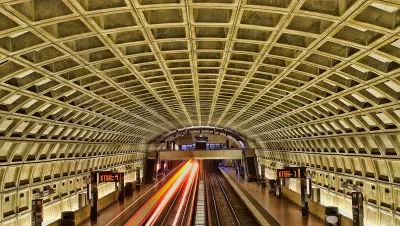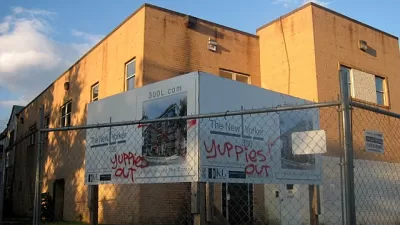Washington, D.C. provides a model for trends found in other cities: people living near transit are trending younger, whiter, and more educated.

Emily Badger reports on a telling fact of the new demographic realities of Washington, D.C.:
"A new Census working paper by Brian McKenzie confirms that the demographics around rail stops in both the District and the wider Washington region reflect a population of workers that's disproportionately young, white and highly educated — and rapidly becoming more so."
The paper finds that while the demographics of Washington, D.C. are trending whiter, younger, and more educated, the change is happening faster around Metro stops than the District average. The trends "hold in the five-county area outside the District, in places like Alexandria, Arlington and Silver Spring served by Metrorail as well."
The implications of the demographic shift, according to Badger, means that developers and landlords are catering housing around transit toward more affluent populations so that housing is becoming more expensive. As prices go up, many of the people that rely on transit can no longer afford to live in places with easy transit access.
The article includes a lot more detail of the data from the working paper.
FULL STORY: What people who live near metro stops increasingly have in common

Maui's Vacation Rental Debate Turns Ugly
Verbal attacks, misinformation campaigns and fistfights plague a high-stakes debate to convert thousands of vacation rentals into long-term housing.

Planetizen Federal Action Tracker
A weekly monitor of how Trump’s orders and actions are impacting planners and planning in America.

Chicago’s Ghost Rails
Just beneath the surface of the modern city lie the remnants of its expansive early 20th-century streetcar system.

Bend, Oregon Zoning Reforms Prioritize Small-Scale Housing
The city altered its zoning code to allow multi-family housing and eliminated parking mandates citywide.

Amtrak Cutting Jobs, Funding to High-Speed Rail
The agency plans to cut 10 percent of its workforce and has confirmed it will not fund new high-speed rail projects.

LA Denies Basic Services to Unhoused Residents
The city has repeatedly failed to respond to requests for trash pickup at encampment sites, and eliminated a program that provided mobile showers and toilets.
Urban Design for Planners 1: Software Tools
This six-course series explores essential urban design concepts using open source software and equips planners with the tools they need to participate fully in the urban design process.
Planning for Universal Design
Learn the tools for implementing Universal Design in planning regulations.
planning NEXT
Appalachian Highlands Housing Partners
Mpact (founded as Rail~Volution)
City of Camden Redevelopment Agency
City of Astoria
City of Portland
City of Laramie





























